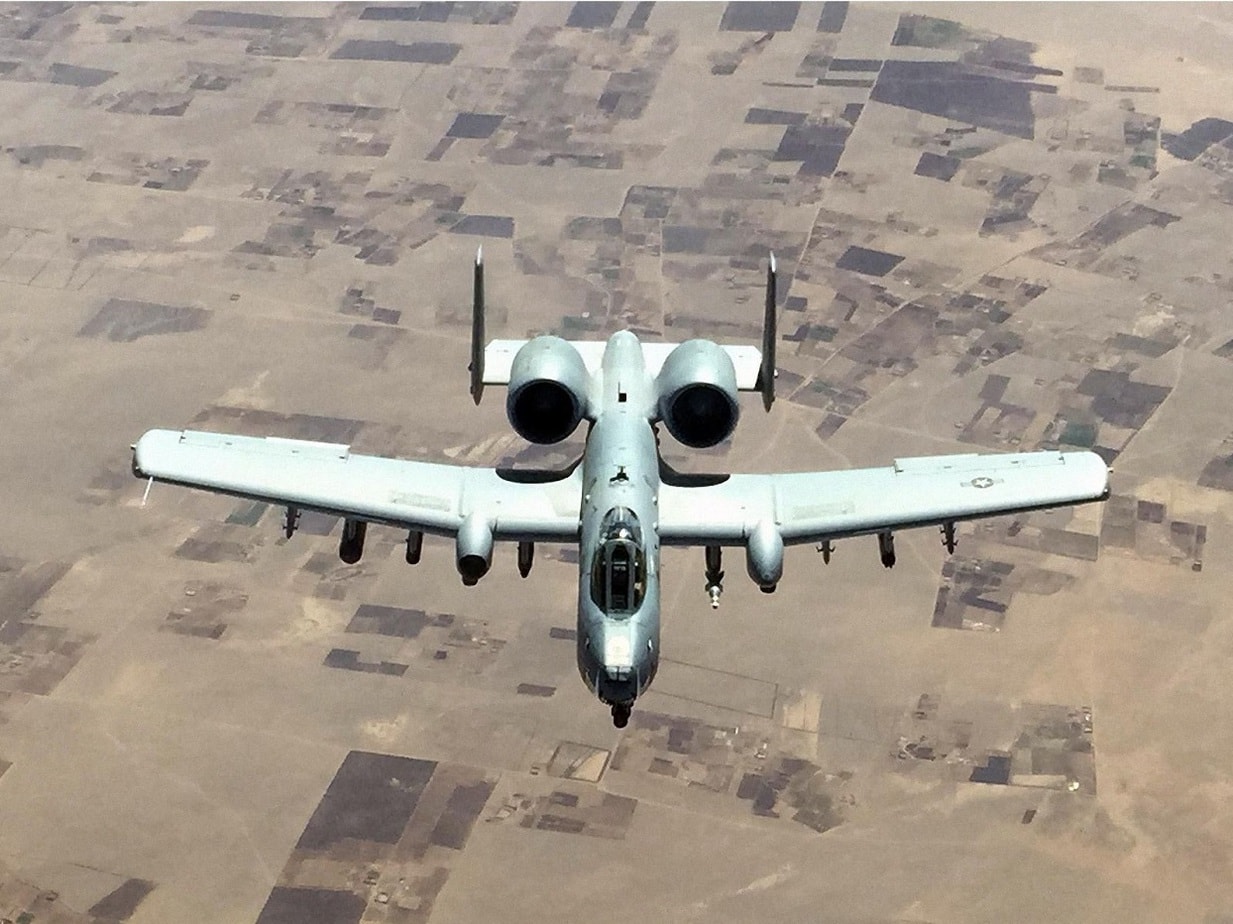The A-10 Thunderbolt II, also called the “Warthog,” is on the chopping block again. In what has become almost a yearly ritual, the U.S. Air Force wants to cut its numbers of the close support attack airplane. Warthog fans say it is an indispensable aircraft with a great combat track record. Detractors believe it flies too slow and would be an easy target for enemy air defenses in a great-power conflict with Russia or China.
Is Congress Finally Ready to Retire the A-10?
This time, the members of a key defense committee in the U.S. Congress agree with the Air Force that it’s time to retire some of the A-10s. The cut would happen at Fort Wayne Air National Guard Base in Indiana, where 21 A-10s would be axed from the 122nd Fighter Wing. These would be replaced by F-16s. The Senate Armed Services Committee confirmed this plan on June 16 when it announced its marked-up version of the National Defense Authorization Act.
The A-10 retirement provision is also in the House Armed Services Committee version of the Act. Usually, lawmakers fight Air Force plans to eliminate the A-10s or reduce their numbers. The service branch wanted to retire the entire fleet in budget proposals in 2015, 2016, and 2017, and then cut parts of the A-10 arsenal in 2021 and 2022. Congress resisted these attempts.
There are five squadrons of A-10s in various Air National Guard and Air Reserve units. It appears that the Indiana reduction has the support of state and federal policymakers from the Hoosier State because of the newer fighters that can take over for the retired A-10s. This could be a template for future reductions to the A-10 force.
A Closer Look at the A-10
1945 consulted the Heritage Foundation’s 2022 Index of Military Strength to get a better picture of Warthog ratings. The A-10 averages 39 years of age, with 117 combat-coded airplanes. (Combat-coded refers to an aircraft that has an assigned wartime mission and is not flying as a training or testing platform.) Eighty-four A-10Cs, or 72%, are mission-capable – a rate very comparable to the 76% mission-capable rate of the F-35A in 2021.
Here are the problems: Overall, the Heritage index rates the A-10’s Age score as “weak,” which means the “equipment age is 61 percent to 80 percent of expected life span.” The A-10’s Capability score is also “weak,” which means “60 percent to 79 percent of capability relies on legacy platforms.”
Air Force brass is concerned that the A-10 has been flying in battlespaces in the Middle East and South Asia where the airplane is not challenged by enemy air defenses and fighter planes. Air Force Chief of Staff Gen. C.Q. Brown refers to this as a permissive environment. In future operating environments, anti-aircraft systems and adversarial warplanes would be a problem for the A-10, due to its slow speed and perceived lack of maneuverability compared to other fighter jets in the Air Force arsenal.
Opponents of A-10 retirement cite the Warthog’s ability to eliminate large numbers of tanks and armored personnel carriers. It also provides vital close air support missions to soldiers on the ground in tight and dangerous situations.
Due to the gradual retirement rate of the A-10, it will likely be flying for at least another decade or two. Heritage says it could be in service through 2040. The A-10 could be slowly replaced by the F-16 in the reserve components as more F-35As come online. This means the F-16 would have to focus on close air support missions. The Air Force should therefore conduct independent studies to define the exact mission parameters and costs of close air support. This is especially important as it moves on from wars in Iraq and Afghanistan to potential conflict with near-peer adversaries.
Now serving as 1945’s Defense and National Security Editor, Brent M. Eastwood, PhD, is the author of Humans, Machines, and Data: Future Trends in Warfare. He is an Emerging Threats expert and former U.S. Army Infantry officer. You can follow him on Twitter @BMEastwood.

